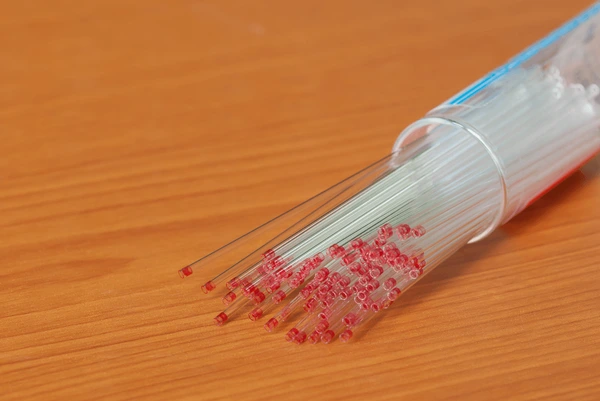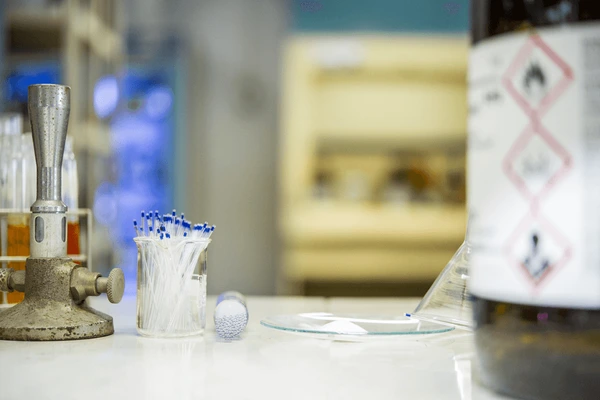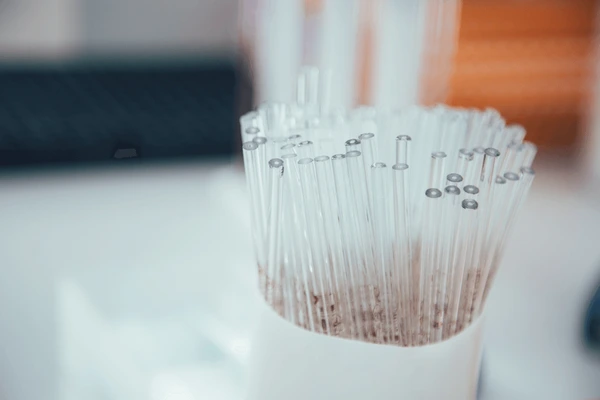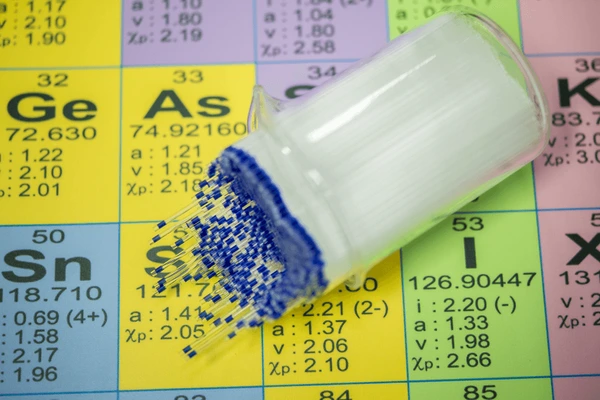Capillary tubes are indispensable components across various scientific, industrial, and medical domains. These narrow, cylindrical tubes may appear simple, but their precise dimensions and material compositions allow them to perform complex functions such as controlling fluid flow, measuring blood samples, and regulating refrigeration systems. In this comprehensive guide, we delve into the details of capillary tubes, covering their structure, principles of operation, and their diverse applications and benefits.
Introduction to Capillary Tubes
Capillary tubes are extremely thin hollow tubes that rely on the physical phenomenon known as capillarity or capillary action. This refers to the ability of a liquid to flow in narrow spaces without the assistance of external forces and, in some cases, even against gravity. These tubes are typically made from materials like glass, plastic, or stainless steel, depending on their specific use.
Capillary Action: The Science Behind It

Capillary action occurs due to the interaction of cohesive and adhesive forces between a liquid and the tube’s material. When a liquid touches the inner surface of a narrow tube, adhesive forces between the liquid and the tube walls cause the liquid to climb upward. At the same time, cohesive forces within the liquid molecules help maintain the continuous column of liquid. This basic yet powerful mechanism allows liquids to move naturally through very small spaces, forming the essential working principle of capillary tubes.
Types of Capillary Tubes
Depending on the application, capillary tubes can be categorized into several types:
1. Glass Capillary Tubes
Used extensively in laboratories, glass capillary tubes are often utilized for blood sampling, chromatography, and precise measurements of small fluid volumes. They are chemically inert and provide clear visibility.
2. Metallic Capillary Tubes
Metallic capillary tubes, commonly made from copper or stainless steel, are mainly utilized in refrigeration and air conditioning systems. They are specifically engineered to endure high pressure and effectively control the expansion of fluids within the system.
3. Plastic Capillary Tubes
These are lightweight and cost-effective options, generally used in microfluidics, medical diagnostics, and pharmaceutical research. They are especially useful in disposable applications.
Construction and Design of Capillary Tubes
A typical capillary tube has:
- Internal Diameter (ID): Usually less than 1 mm
- Length: Can vary based on the required flow resistance
- Material: Depends on application, glass for lab work, metal for HVAC, plastic for medical usage
The dimensions of a capillary tube play a crucial role in determining its flow characteristics, including resistance, pressure drop, and flow rate. A longer tube or one with a smaller internal diameter will offer more resistance to fluid flow, which is often desired in certain controlled environments.
Applications of Capillary Tubes

1. Medical Applications
- Blood Sampling: Capillary tubes are extensively used for collecting small blood samples, especially for infants or for rapid diagnostic testing.
- Microhematocrit Tests: It involves using capillary tubes in clinical laboratories to determine the percentage of red blood cells in a blood sample.
- Intravenous (IV) Systems: Capillary tubing helps regulate the flow of fluids and medications with extreme precision.
2. Scientific Research and Laboratory Use
- Thin-Layer Chromatography (TLC): Glass capillaries are essential for spotting solutions onto TLC plates.
- Microfluidics: These tubes help manipulate fluids in microliter volumes, crucial for analytical chemistry and bioengineering.
- Viscometry: Capillary viscometers rely on these tubes to measure the viscosity of liquids by tracking their flow rates.
3. Refrigeration and Air Conditioning
Metallic capillary tubes serve as throttling devices in refrigeration cycles. They manage the pressure difference between the condenser and the evaporator and regulate the flow of refrigerant, making them a core component in domestic refrigerators and small cooling units.
4. Industrial Automation
In precision instrumentation, capillary tubes channel minute fluid amounts for processes like ink delivery in printers, fuel injectors, and even aerospace components, where reliability and precision are paramount.
Advantages of Capillary Tubes

Capillary tubes offer several distinct advantages, which make them the preferred choice in many systems:
- Passive Flow Control: They do not require external power sources to regulate fluid movement.
- Cost-Effective: Especially in refrigeration, they are much cheaper than expansion valves.
- Minimal Space Requirement: Their small size makes them ideal for compact systems.
- Reliable and Durable: With proper material selection, capillary tubes can function effectively over long periods without degradation.
Key Factors Influencing Capillary Tube Performance
Several parameters affect the performance of a capillary tube:
- Tube Length and Diameter: Critical in determining flow resistance.
- Fluid Viscosity and Surface Tension: These properties influence how well a fluid travels through the tube.
- Temperature: Higher temperatures can reduce fluid viscosity, altering flow rates.
- Tube Material: Affects adhesion and compatibility with the fluid in use.
For refrigeration purposes, selecting the right capillary tube length and diameter ensures optimal pressure drop and efficient cycle operation. A mismatch can lead to reduced cooling efficiency or even system failure.
Maintenance and Handling Tips
Proper handling of capillary tubes is essential, especially in sensitive applications:
- Avoid Bending: Excessive bending can damage the tube or obstruct fluid flow.
- Cleanliness: For lab use, ensure the tube is free from contaminants to avoid skewed results.
- Storage: Store in dry, secure environments to prevent contamination or corrosion.
- Calibration: In measurement applications, regular calibration ensures consistent and accurate performance.
Choosing the Right Capillary Tube for Your Needs
Selecting the correct capillary tube involves evaluating several criteria:
- Purpose of Use: Medical, industrial, or scientific?
- Fluid Type: Is the fluid corrosive, viscous, or temperature-sensitive?
- Required Flow Rate: Higher flow rates need shorter and wider tubes.
- Material Compatibility: Must be inert or resistant to the fluid in use.
Manufacturers often provide charts or calculators to help determine the optimal specifications based on system needs.
Future Innovations in Capillary Tube Technology
With advancements in nanotechnology and microfabrication, the design of capillary tubes is evolving. Nano-capillaries now allow manipulation of even smaller fluid volumes, leading to breakthroughs in lab-on-a-chip devices and point-of-care diagnostics. The integration of smart materials in capillary systems also promises self-regulating capabilities in the near future.
Conclusion
Capillary tubes, though modest in appearance, are powerful tools across medicine, science, refrigeration, and industry. Their ability to harness fundamental physical principles allows them to perform tasks that are both vital and irreplaceable. Whether it’s transporting minute volumes of liquid in a lab or regulating refrigerant flow in your refrigerator, capillary tubes deliver unmatched precision, efficiency, and reliability.
What are capillary tubes?
Capillary tubes are indispensable components across various scientific, industrial, and medical domains. These narrow, cylindrical tubes may appear simple, but their precise dimensions and material compositions allow them to perform complex functions such as controlling fluid flow, measuring blood samples, and regulating refrigeration systems. In this comprehensive guide, we delve into the details of capillary tubes, covering their structure, principles of operation, and their diverse applications and benefits.
Introduction to Capillary Tubes
Capillary tubes are extremely thin hollow tubes that rely on the physical phenomenon known as capillarity or capillary action. This refers to the ability of a liquid to flow in narrow spaces without the assistance of external forces and, in some cases, even against gravity. These tubes are typically made from materials like glass, plastic, or stainless steel, depending on their specific use.
Capillary Action: The Science Behind It
Capillary action occurs due to the interaction of cohesive and adhesive forces between a liquid and the tube’s material. When a liquid touches the inner surface of a narrow tube, adhesive forces between the liquid and the tube walls cause the liquid to climb upward. At the same time, cohesive forces within the liquid molecules help maintain the continuous column of liquid. This basic yet powerful mechanism allows liquids to move naturally through very small spaces, forming the essential working principle of capillary tubes.
Types of Capillary Tubes
Depending on the application, capillary tubes can be categorized into several types:
1. Glass Capillary Tubes
Used extensively in laboratories, glass capillary tubes are often utilized for blood sampling, chromatography, and precise measurements of small fluid volumes. They are chemically inert and provide clear visibility.
2. Metallic Capillary Tubes
Metallic capillary tubes, commonly made from copper or stainless steel, are mainly utilized in refrigeration and air conditioning systems. They are specifically engineered to endure high pressure and effectively control the expansion of fluids within the system.
3. Plastic Capillary Tubes
These are lightweight and cost-effective options, generally used in microfluidics, medical diagnostics, and pharmaceutical research. They are especially useful in disposable applications.
Construction and Design of Capillary Tubes
A typical capillary tube has:
Internal Diameter (ID): Usually less than 1 mm
Length: Can vary based on the required flow resistance
Material: Depends on application—glass for lab work, metal for HVAC, plastic for medical usage
The dimensions of a capillary tube play a crucial role in determining its flow characteristics, including resistance, pressure drop, and flow rate. A longer tube or one with a smaller internal diameter will offer more resistance to fluid flow, which is often desired in certain controlled environments.
Applications of Capillary Tubes
1. Medical Applications
Blood Sampling: Capillary tubes are extensively used for collecting small blood samples, especially for infants or for rapid diagnostic testing.
Microhematocrit Tests: It involves using capillary tubes in clinical laboratories to determine the percentage of red blood cells in a blood sample.
Intravenous (IV) Systems: Capillary tubing helps regulate the flow of fluids and medications with extreme precision.
2. Scientific Research and Laboratory Use
Thin-Layer Chromatography (TLC): Glass capillaries are essential for spotting solutions onto TLC plates.
Microfluidics: These tubes help manipulate fluids in microliter volumes, crucial for analytical chemistry and bioengineering.
Viscometry: Capillary viscometers rely on these tubes to measure the viscosity of liquids by tracking their flow rates.
3. Refrigeration and Air Conditioning
Metallic capillary tubes serve as throttling devices in refrigeration cycles. They manage the pressure difference between the condenser and the evaporator and regulate the flow of refrigerant, making them a core component in domestic refrigerators and small cooling units.
4. Industrial Automation
In precision instrumentation, capillary tubes channel minute fluid amounts for processes like ink delivery in printers, fuel injectors, and even aerospace components, where reliability and precision are paramount.
Advantages of Capillary Tubes
Capillary tubes offer several distinct advantages, which make them the preferred choice in many systems:
Passive Flow Control: They do not require external power sources to regulate fluid movement.
Cost-Effective: Especially in refrigeration, they are much cheaper than expansion valves.
Minimal Space Requirement: Their small size makes them ideal for compact systems.
Reliable and Durable: With proper material selection, capillary tubes can function effectively over long periods without degradation.
Key Factors Influencing Capillary Tube Performance
Several parameters affect the performance of a capillary tube:
Tube Length and Diameter: Critical in determining flow resistance.
Fluid Viscosity and Surface Tension: These properties influence how well a fluid travels through the tube.
Temperature: Higher temperatures can reduce fluid viscosity, altering flow rates.
Tube Material: Affects adhesion and compatibility with the fluid in use.
For refrigeration purposes, selecting the right capillary tube length and diameter ensures optimal pressure drop and efficient cycle operation. A mismatch can lead to reduced cooling efficiency or even system failure.
Maintenance and Handling Tips
Proper handling of capillary tubes is essential, especially in sensitive applications:
Avoid Bending: Excessive bending can damage the tube or obstruct fluid flow.
Cleanliness: For lab use, ensure the tube is free from contaminants to avoid skewed results.
Storage: Store in dry, secure environments to prevent contamination or corrosion.
Calibration: In measurement applications, regular calibration ensures consistent and accurate performance.
Choosing the Right Capillary Tube for Your Needs
Selecting the correct capillary tube involves evaluating several criteria:
Purpose of Use: Medical, industrial, or scientific?
Fluid Type: Is the fluid corrosive, viscous, or temperature-sensitive?
Required Flow Rate: Higher flow rates need shorter and wider tubes.
Material Compatibility: Must be inert or resistant to the fluid in use.
Manufacturers often provide charts or calculators to help determine the optimal specifications based on system needs.
Future Innovations in Capillary Tube Technology
With advancements in nanotechnology and microfabrication, the design of capillary tubes is evolving. Nano-capillaries now allow manipulation of even smaller fluid volumes, leading to breakthroughs in lab-on-a-chip devices and point-of-care diagnostics. The integration of smart materials in capillary systems also promises self-regulating capabilities in the near future.
Conclusion
Capillary tubes, though modest in appearance, are powerful tools across medicine, science, refrigeration, and industry. Their ability to harness fundamental physical principles allows them to perform tasks that are both vital and irreplaceable. Whether it’s transporting minute volumes of liquid in a lab or regulating refrigerant flow in your refrigerator, capillary tubes deliver unmatched precision, efficiency, and reliability.
What are the applications of capillary tubes?
1. Medical Applications
Blood Sampling: Capillary tubes are extensively used for collecting small blood samples, especially for infants or for rapid diagnostic testing.
Microhematocrit Tests: It involves using capillary tubes in clinical laboratories to determine the percentage of red blood cells in a blood sample.
Intravenous (IV) Systems: Capillary tubing helps regulate the flow of fluids and medications with extreme precision.
2. Scientific Research and Laboratory Use
Thin-Layer Chromatography (TLC): Glass capillaries are essential for spotting solutions onto TLC plates.
Microfluidics: These tubes help manipulate fluids in microliter volumes, crucial for analytical chemistry and bioengineering.
Viscometry: Capillary viscometers rely on these tubes to measure the viscosity of liquids by tracking their flow rates.
3. Refrigeration and Air Conditioning
Metallic capillary tubes serve as throttling devices in refrigeration cycles. They manage the pressure difference between the condenser and the evaporator and regulate the flow of refrigerant, making them a core component in domestic refrigerators and small cooling units.
4. Industrial Automation
In precision instrumentation, capillary tubes channel minute fluid amounts for processes like ink delivery in printers, fuel injectors, and even aerospace components, where reliability and precision are paramount.
What are the advantages of capillary tubes?
Capillary tubes offer several distinct advantages, which make them the preferred choice in many systems:
Passive Flow Control: They do not require external power sources to regulate fluid movement.
Cost-Effective: Especially in refrigeration, they are much cheaper than expansion valves.
Minimal Space Requirement: Their small size makes them ideal for compact systems.
Reliable and Durable: With proper material selection, capillary tubes can function effectively over long periods without degradation.
What is a capillary tube used for?
Capillary tubes are indispensable components across various scientific, industrial, and medical domains. These narrow, cylindrical tubes may appear simple, but their precise dimensions and material compositions allow them to perform complex functions such as controlling fluid flow, measuring blood samples, and regulating refrigeration systems. In this comprehensive guide, we delve into the details of capillary tubes, covering their structure, principles of operation, and their diverse applications and benefits.
Introduction to Capillary Tubes
Capillary tubes are extremely thin hollow tubes that rely on the physical phenomenon known as capillarity or capillary action. This refers to the ability of a liquid to flow in narrow spaces without the assistance of external forces and, in some cases, even against gravity. These tubes are typically made from materials like glass, plastic, or stainless steel, depending on their specific use.
Capillary Action: The Science Behind It
Capillary action occurs due to the interaction of cohesive and adhesive forces between a liquid and the tube’s material. When a liquid touches the inner surface of a narrow tube, adhesive forces between the liquid and the tube walls cause the liquid to climb upward. At the same time, cohesive forces within the liquid molecules help maintain the continuous column of liquid. This basic yet powerful mechanism allows liquids to move naturally through very small spaces, forming the essential working principle of capillary tubes.
Types of Capillary Tubes
Depending on the application, capillary tubes can be categorized into several types:
1. Glass Capillary
Used extensively in laboratories, glass capillary tubes are often utilized for blood sampling, chromatography, and precise measurements of small fluid volumes. They are chemically inert and provide clear visibility.
2. Metallic Capillary
These tubes are commonly made from copper or stainless steel, are mainly utilized in refrigeration and air conditioning systems. They are specifically engineered to endure high pressure and effectively control the expansion of fluids within the system.
3. Plastic Capillary
These are lightweight and cost-effective options, generally used in microfluidics, medical diagnostics, and pharmaceutical research. They are especially useful in disposable applications.
Construction and Design of Capillary
A typical capillary tube has:
Internal Diameter (ID): Usually less than 1 mm
Length: Can vary based on the required flow resistance
Material: Depends on application—glass for lab work, metal for HVAC, plastic for medical usage
The dimensions of a capillary tube play a crucial role in determining its flow characteristics, including resistance, pressure drop, and flow rate. A longer tube or one with a smaller internal diameter will offer more resistance to fluid flow, which is often desired in certain controlled environments.
Applications of Capillary Tubes
1. Medical Applications
Blood Sampling: Capillary tubes are extensively used for collecting small blood samples, especially for infants or for rapid diagnostic testing.
Microhematocrit Tests: It involves using capillary tubes in clinical laboratories to determine the percentage of red blood cells in a blood sample.
Intravenous (IV) Systems: Capillary tubing helps regulate the flow of fluids and medications with extreme precision.
2. Scientific Research and Laboratory Use
Thin-Layer Chromatography (TLC): Glass capillaries are essential for spotting solutions onto TLC plates.
Microfluidics: These tubes help manipulate fluids in microliter volumes, crucial for analytical chemistry and bioengineering.
Viscometry: Capillary viscometers rely on these tubes to measure the viscosity of liquids by tracking their flow rates.
3. Refrigeration and Air Conditioning
Metallic capillary tubes serve as throttling devices in refrigeration cycles. They manage the pressure difference between the condenser and the evaporator and regulate the flow of refrigerant, making them a core component in domestic refrigerators and small cooling units.
4. Industrial Automation
In precision instrumentation, capillary tubes channel minute fluid amounts for processes like ink delivery in printers, fuel injectors, and even aerospace components, where reliability and precision are paramount.
Advantages
Capillary tubes offer several distinct advantages, which make them the preferred choice in many systems:
Passive Flow Control: They do not require external power sources to regulate fluid movement.
Cost-Effective: Especially in refrigeration, they are much cheaper than expansion valves.
Minimal Space Requirement: Their small size makes them ideal for compact systems.
Reliable and Durable: With proper material selection, capillary tubes can function effectively over long periods without degradation.
Key Factors Influencing Capillary Tube Performance
Several parameters affect the performance of a capillary tube:
Tube Length and Diameter: Critical in determining flow resistance.
Fluid Viscosity and Surface Tension: These properties influence how well a fluid travels through the tube.
Temperature: Higher temperatures can reduce fluid viscosity, altering flow rates.
Tube Material: Affects adhesion and compatibility with the fluid in use.
For refrigeration purposes, selecting the right capillary tube length and diameter ensures optimal pressure drop and efficient cycle operation. A mismatch can lead to reduced cooling efficiency or even system failure.
Maintenance and Handling Tips
Proper handling of capillary tubes is essential, especially in sensitive applications:
Avoid Bending: Excessive bending can damage the tube or obstruct fluid flow.
Cleanliness: For lab use, ensure the tube is free from contaminants to avoid skewed results.
Storage: Store in dry, secure environments to prevent contamination or corrosion.
Calibration: In measurement applications, regular calibration ensures consistent and accurate performance.
Choosing the Right Capillary Tube for Your Needs
Selecting the correct capillary tube involves evaluating several criteria:
Purpose of Use: Medical, industrial, or scientific?
Fluid Type: Is the fluid corrosive, viscous, or temperature-sensitive?
Required Flow Rate: Higher flow rates need shorter and wider tubes.
Material Compatibility: Must be inert or resistant to the fluid in use.
Manufacturers often provide charts or calculators to help determine the optimal specifications based on system needs.
Future Innovations in Capillary Tube Technology
With advancements in nanotechnology and microfabrication, the design of capillary tubes is evolving. Nano-capillaries now allow manipulation of even smaller fluid volumes, leading to breakthroughs in lab-on-a-chip devices and point-of-care diagnostics. The integration of smart materials in capillary systems also promises self-regulating capabilities in the near future.
Conclusion
Capillary tubes, though modest in appearance, are powerful tools across medicine, science, refrigeration, and industry. Their ability to harness fundamental physical principles allows them to perform tasks that are both vital and irreplaceable. Whether it’s transporting minute volumes of liquid in a lab or regulating refrigerant flow in your refrigerator, capillary tubes deliver unmatched precision, efficiency, and reliability.
What are the types of capillary tubes?
Depending on the application, capillary tubes can be categorized into several types:
1. Glass Capillary Tubes
Used extensively in laboratories, glass capillary tubes are often utilized for blood sampling, chromatography, and precise measurements of small fluid volumes. They are chemically inert and provide clear visibility.
2. Metallic Capillary Tubes
Metallic capillary tubes, commonly made from copper or stainless steel, are mainly utilized in refrigeration and air conditioning systems. They are specifically engineered to endure high pressure and effectively control the expansion of fluids within the system.
3. Plastic Capillary Tubes
These are lightweight and cost-effective options, generally used in microfluidics, medical diagnostics, and pharmaceutical research. They are especially useful in disposable applications.

Very soon this web page will be famous amid all blogging people, due to it’s good
content